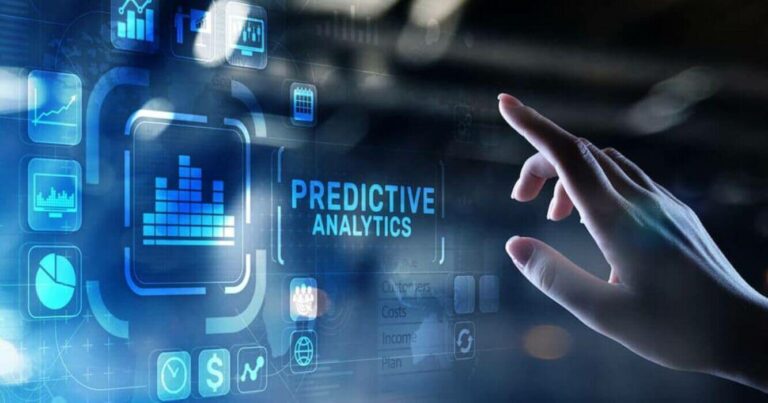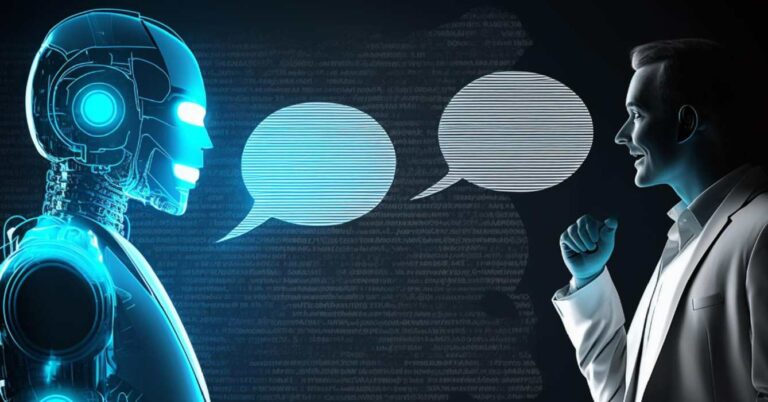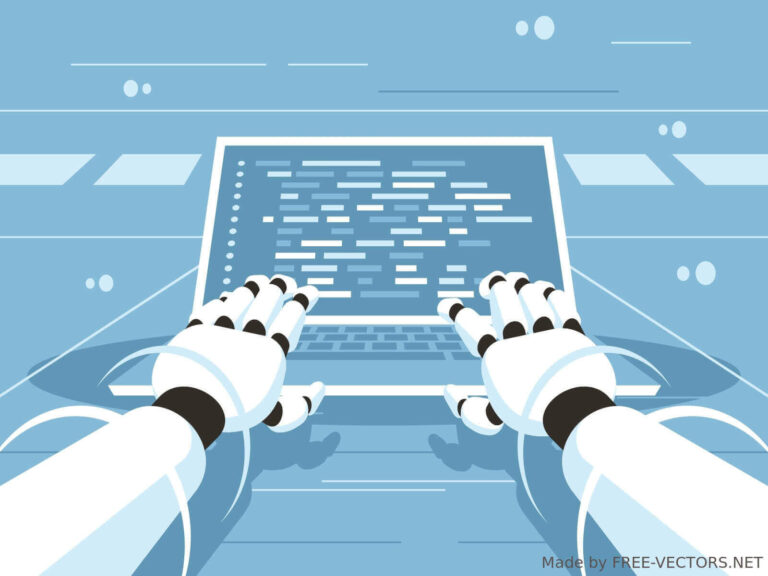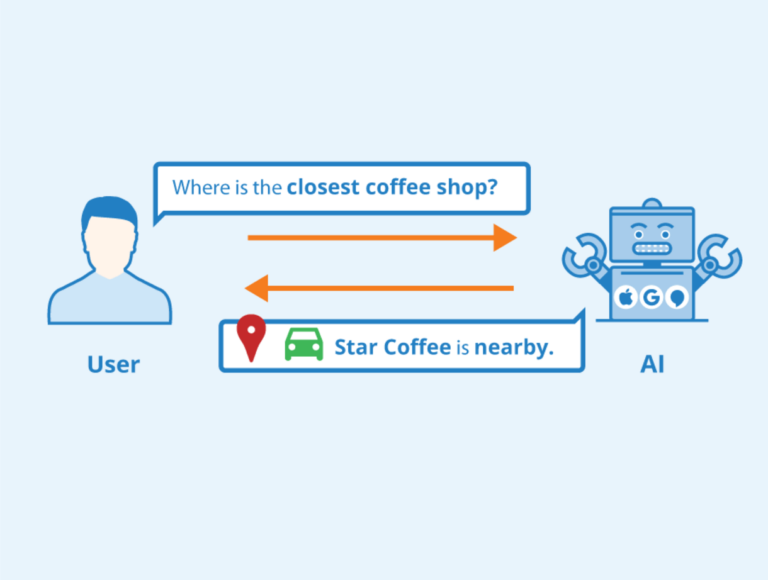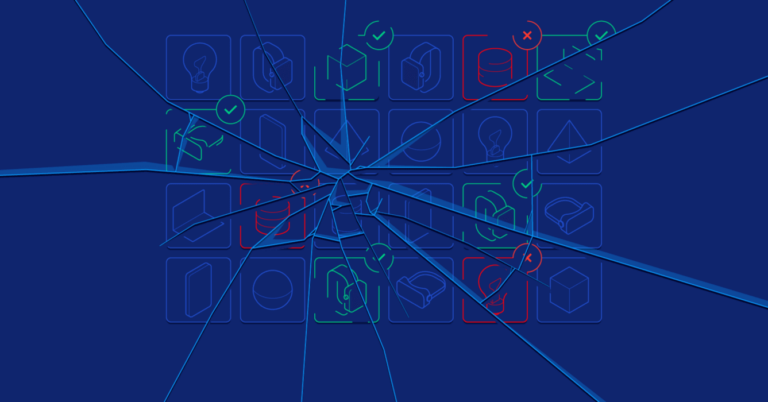Digital Twins: What Is It And How It Works
Looking to explore the transformative power of real-time simulations, predictive insights, and personalized solutions in your business? Discover how digital twins can help you to unlock innovation, boost efficiency, and drive advancements.
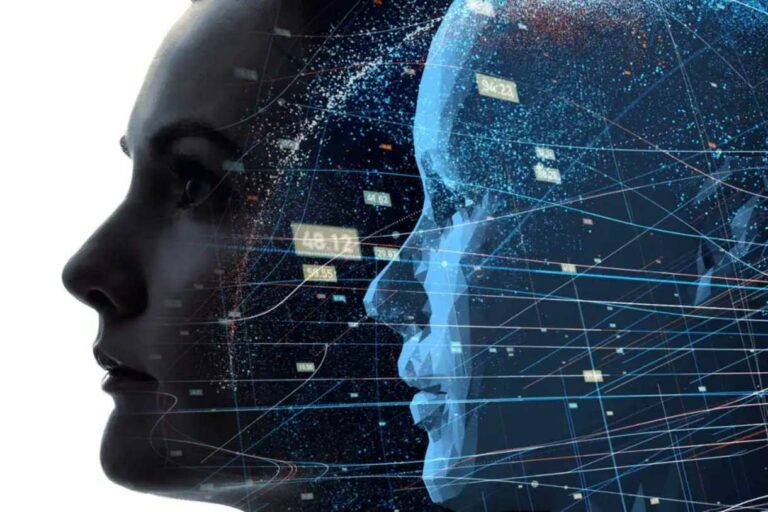
A digital twin is a virtual model of a physical object that is often used for simulations, testing, and monitoring of the physical object.
They make it easier to visualize complex projects, such as big machines, jet engines, smart cities, and utility installations.
Digital twins can also exist for non-existent objects – in which case they are used for the planning and development of such an object.
This blog details everything you need to know about digital twins and to you see if it might benefit your next project.
Characteristics Of Digital Twins
Digital twin technologies set themselves apart from other technologies with a unique set of characteristics and these include:
- Modularity: Digital twin technologies often apply a modular design approach to build a single machine with multiple components. This approach makes it easy to identify specific components that can be swapped, improved upon, or tweaked in some ways to achieve desired results.
- Connectivity: Digital twins also rely a lot on connectivity and this is usually achieved by connected sensors through IoT devices. This connectivity goes both ways to enable communication between the digital and physical twins.
- Smart & Re-programmable: Digital twin systems are smart in the sense that you can make changes to different parameters. Information from IoT sensors, for instance, can cause the digital twin to adjust some parameters, and equally send these new settings over to the physical twin to adjust itself.
- Homogenization: Homogenization refers to the streamlining of all data and inputs from the physical machine in a simple, digital format that makes it easy to share with other users, systems, or team members.
- Digital Trace Making: Digital twins also leave traces that make it easy to rewind a machine’s state, for instance, to a previous time before a malfunction occurred. Thus, making it easy to diagnose problems.
How Digital Twins Work
The process of digital twins’ functionality is relatively simple. Here is the basic 3-step process.
1. The Physical Twin
First, there is the physical object or machine, which could be anything from a V8 internal combustion engine to a turbo-fan jet engine, an assembly line in a factory, or an entire supply chain. A physical twin is equipped with sensors that collect and transmit all forms of data from it to its virtual twin. These data can include temperature, rotations per minute, pressure, noise level, vibration, and so on.
2. The Digital Twin
In the computer world, a corresponding virtual model of the physical twin is created for a virtual simulation. This virtual model can be as simple or complex as needed. It could use simple graphic representations or employ more complex graphics with physical or engineering principles that make it mimic its physical twin more authentically.
3. The Data Connection
The system only becomes complete when live data from the sensors is fed into the digital twin to create a real-time feedback loop, where the physical twin influences its digital counterpart, and the digital twin, in turn, can also monitor the physical performance, run simulations, make changes to the physical twin, or be used to train personnel for work.
The Benefits of Digital Twins
The advantages of digital twins are many and here are a few:
- Predictive Maintenance: By steady monitoring of equipment and its performance, digital twins enable predictive maintenance and can help prevent costly equipment failures and unplanned downtime.
- Improved Operational Efficiency: By providing insights to optimize processes and optimally allocate resources based on real-time data, digital twins can also lead to significant productivity gains.
- Enhanced Safety & Risk Management: Dangerous scenarios can be simulated with a digital twin to identify potential hazards and take the proper steps.
- Innovation & Product Development: Digital twins can help to facilitate innovation by providing a virtual environment for testing and refining ideas before committing to physical production. This can accelerate the innovation and product development process, helping to bring products faster to market.
- Improved Decision-Making: Digital twins provide real-time, data-driven insights into the state and performance of physical systems. This information can empower decision-makers to make informed choices, optimize their system’s processes, and respond to unforeseen circumstances with more ease.
- Cost Savings: Digital twins can contribute to cost savings in an organization through predictive maintenance, process optimization, and improved overall resource management.
Types of Digital Twins
There are various types of digital twins, based on their application or scope. Here are the major ones:
- Component Twins: Also called the parts twin, this is a digital twin that corresponds to the smallest element of a system. An example is a single piston from a 6-cylinder engine. Component twins can monitor specific parameters like vibration and temperature.
- Product Twins: A product or asset twin usually combines several component twins to achieve this model with a higher complexity. Product twins usually represent physical products, such as an engine, a ventilator, and so on.
- Process Twins: Used to model and simulate the operations or workflows within a system. Process twins can be applied to optimize or monitor industrial processes like manufacturing and supply chain management.
- System Twins: Combines multiple processes or product twins to create a complex system used to analyze or simulate the interactions of various virtual models as a single unit.
Applications Across Industries
Companies are applying digital twin technologies to various industries around the world. Here are some of these major applications:
- Manufacturing: Digital twins help to optimize the production process in factories and thereby minimize downtime, monitor equipment health, and enhance the company’s overall operational efficiency.
- Aerospace: Aerospace manufacturers employ digital twins for aircraft component designs and testing. Others employ it for real-time monitoring, such as Rolls-Royce does with its engines.
- Smart Cities: Smart cities are employing digital twins in traffic optimization, energy monitoring, management, and making various informed decisions that will benefit the city’s residents.
- Energy & Utilities: Digital twin technology helps in managing renewables, power grids, and any complex mix of energy systems. They can help in resource allocation optimization, energy demand prediction, and so on.
- Construction: Digital twins are allowing architects and engineers to visualize and simulate different options before they break ground. Plus, they can also monitor a building after construction.
- Supply Chain Management: Complex supply chains can employ digital twin technology to track goods and materials in real time, optimize transportation routes, identify potential delays, and improve the overall efficiency of the supply chain.
- Product Development: Digital twins can be used in virtually testing and refining new products before bringing them to market, thus reducing development costs.
Example Applications
Here are some memorable examples of the different ways that companies are employing digital twin technology.
- GE Wind Turbines: GE uses digital twins of wind turbines for performance monitoring and predictive maintenance.
- SpaceX: A digital twin of its Dragon capsule enables operators to monitor and adjust trajectories, loads, and propulsion systems for safety and reliability.
- Singapore Smart City: Singapore is developing a digital twin of the entire city, including buildings, infrastructure, and its transportation networks to monitor energy consumption, air quality, and traffic in real time.
- Schneider Electric Grids: Schneider Electric uses digital twins of electricity grids for energy flow optimization, potential outage predictions, and grid resilience.
- AB InBev: The world’s largest brewer employs digital twins technology to manage its supply chains and production lines.
- Rolls-Royce: The Rolls-Royce company uses digital twins of its aircraft engines for real-time engine tracking, optimization, and fuel efficiency.
- Unilever: This manufacturing giant employs digital twin technology for process optimization and resource maximization in their factories.
- Boston Consulting Group: The Boston Consulting Group (BCG) employs digital twins of business processes to identify and solve inefficiencies, predict process bottlenecks, and optimize resource allocation in their client’s businesses.
Digital twin technologies are not developing in a vacuum. They are a result of interaction with multiple other technologies, which include the following:
- AI & ML: Artificial intelligence (AI) and machine learning (ML) are fields of computer science that make it easy for engineers to take the sensor and data inputs from digital twin systems and turn them into actionable insights or other valuable business applications.
- IoT: The Internet of Things (IoT) is the growing web of interconnected devices that can communicate with each other and with other computing platforms. IoT applications and innovations are still on the rise.
- Extended Reality: Extended reality is an umbrella term that refers to virtual reality, augmented reality, and mixed reality applications.
- Cloud & Edge: Cloud platforms make data homogenization easier, while edge computing systems help companies optimize their infrastructure and data processing capabilities.
- Simulators: From 3D modeling systems to physics engines, visualization tools, and other platforms that enable the creation and visualization of digital twins.
- Blockchain: Some digital twin applications, such as supply chain solutions, apply Blockchain technologies for precise and reliable data management.
Resources
- Wikipedia article on digital twins: https://en.wikipedia.org/wiki/Digital_twin
- IBM on digital twins: https://developer.ibm.com/articles/what-are-digital-twins/
- Microsoft’s Azure Digital Twins service: https://azure.microsoft.com/en-us/products/digital-twins
- Digital Twin Consortium: https://www.digitaltwinconsortium.org/
- Digital Twin Hub: https://digitaltwinhub.co.uk/forums/
- Industrial IoT Insights Hub: https://plm.sw.siemens.com/en-US/insights-hub/
Conclusion
You have seen how digital twins are transforming and revolutionizing the way we perceive and interact with the physical world. From product design to the orchestration of entire urban ecosystems, digital twins offer unparalleled insights, efficiency, and innovation.
Digital twins also connect the physical and digital realms with real-time data analytics and predictive capabilities, which empowers industries to easily optimize processes and enhance decision-making. This can help you and your business to unlock new possibilities.
